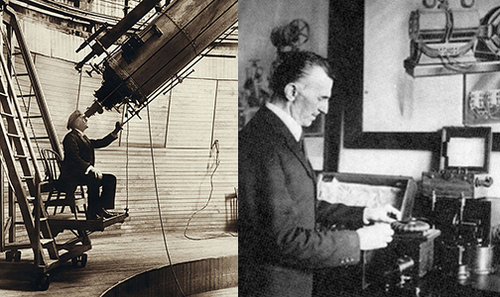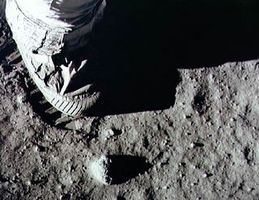A distant light hugging the Martian horizon as photographed by Curiosity was evidence to some of an underground civilization whose citizens didn't keep their shades drawn on April 3 and 4.
Here be Martians?
Even the tiniest visual anomaly on Mars sends Earthlings reeling in imaginative speculation. In the past few years, cameras on the orbiters, landers and rovers we've sent to Mars have turned up "Martians" of every variety: iguanas, rats, turtles, squirrels, Yetis, humanoid faces, and an entire alien base camp and mothership. UFO Sightings Daily posts all the alien news, with revealing photos.
The scientific term for looking at Mars from so far away is remote sensing, the process of gathering data from a distance. We're not there, but our instruments are; they capture and transmit images, and we do our best to figure out exactly what they've seen, but the results are often difficult to interpret and are sometimes severely limited in quality (low-resolution visuals) and quantity (small sampling areas). Inevitably, our localized senses try to fill the gaps, and subjectivity intervenes. We want more. More specifically, we want Martians.
There's a scientific tradition at work here.
In 1894, when astronomer Percival Lowell first trained his fancy new telescope on Mars, he saw what he described as an admirable network of canals -- evidence, he believed, of intelligent life there. About the same time, inventor Nikola Tesla heard what he thought may have been the first messages transmitted by the Martians: repetitive signals among the atmospheric radio noise he heard on receivers in his lab, perhaps the first interplanetary phone call. Hello, Mars!
Lowell (left) and Tesla, remote sensing
These were not ET fanatics, mind you, but among the highly respected scientists of their day. A little over a century later, a survey among Mars-focused scientists turned up 75 percent who believe life once existed on Mars, and 25 percent who think it still does. The majority of those weighing in via public opinion polls (40 percent on both space.com and debate.org) agree that Mars is indeed a life-harboring planet, although the "Martians" most likely exist in microbial form.
The story of Mars -- and Martians -- we've built over centuries of remote sensing is distorted, ambiguous, and incomplete, because our senses, especially when employed at such a great distance, cannot be trusted. For every argument in support of an artificially built canal, there's an equally compelling argument in favor of natural formations. For every structured radio transmission, there's a valid explanation of how random noise is often perceived as much more. For every face on Mars, there's a reasonable explanation of an interesting rock formation, and for every light leak emitted by an underground civilization, there's a rationale involving reflected sunlight or a camera glitch.
The next step beyond remote sensing is ground truthing, a process that connects the image data gathered from a distance to real features and materials. Unless you can ground truth what you see hear or touch remotely, there's no objective verification.
Some consider rovers and landers the original ground truthers on Mars, but these are constrained by limitations of their design and operation. Running full-speed ahead to take a closer look is not an option for Curiosity, which follows a preplanned itinerary made up of step-by-step instructions that are bounced to Mars, then carried out asynchronously, and at less than a snail's pace -- on a good day, Curiosity travels upwards of 600 feet. Nor is taking an impromptu side trip encouraged in an expensive mission crammed with preplanned routes and goals.
Ground truthing Mars will require spaceboots on the ground, filled by humans with eyes wide open and cameras and recorders rolling.
Ground truthing the moon -- Mars is next!
The first humans to experience first-hand the multisensory extravaganza of living on Mars will ground truth the planet for the rest of us. Inevitably, they'll turn the cameras on themselves to snap a few selfies and, at last, we'll get to see the Martians: the ones we've just become.


